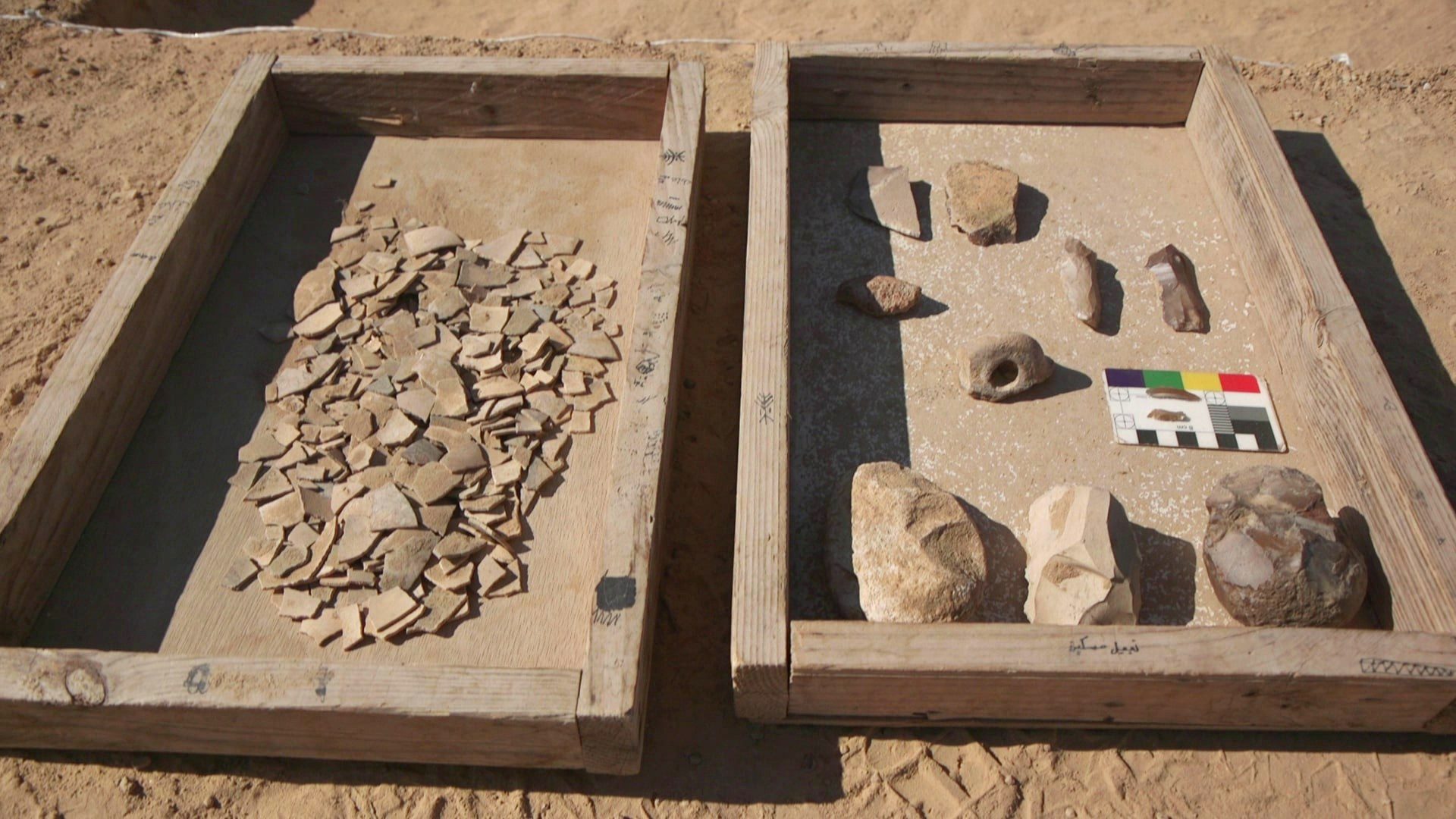The remnants of a biblical breakfast have been revealed in the Levant, where archaeologists have uncovered eight ostrich eggs near a fire pit used by desert nomads in ancient times. Dated to between 4,000 and 7,500 years ago, the giant ova were found during an excavation of the Nitzana sand dunes in Israel’s Negev Desert.
“We found a camp site – which extends over about 200 square meters [2,153 square feet] – that was used by the desert nomads since prehistoric times”, said Israel Antiquities Authority excavation director Lauren Davis in a statement seen by IFLScience. “At the site we found burnt stones, flint and stone tools as well as pottery shards, but the truly special find is this collection of ostrich eggs.”

Trays containing ostrich egg shell fragments (left) and flint tools (right). Image credit: Emil Aladjem, Israel Antiquities Authority
If you’re wondering how a bunch of drifters managed to get hold of such a delicacy in the middle of the desert, bear in mind that ostriches were common in the region until they became extinct in the wild in the 19th century. Given that one of their eggs contains about 25 times the nutritional value of a chicken egg, it’s hardly surprising that ancient travelers sought them out as a source of food.
“The proximity of the group of eggs to the fire pit indicates that this is not a natural chance find but the intentional collecting of the eggs,” said Davis. “One of the eggs was found directly in the fire pit, strengthening the understanding that they were used as food here.”
Previous excavations have unearthed ostrich eggs in funerary contexts and as decorations. Interestingly, however, ostrich bones are not found at archaeological sites in the region, implying that ancient wanderers probably didn’t fancy trying to take down a full-sized trouserless thundergoose but were content with their enormous bum nuts.
“Although the nomads did not build permanent structures at this site, the finds allow us to feel their presence in the desert,” said Davis.
Despite being crushed, the eggs are described as being exceptionally preserved. It’s likely that the campsite at which they were cooked was covered by desert sands shortly after the travelers moved on, only to be revealed thousands of years later with the shifting of the dunes. According to Davis, the protection provided by this ever-changing blanket of sand enabled the eggs to remain in pristine condition over several millennia.
The researchers now plan to reconstruct the eggs “like a [jigsaw] puzzle.” In doing so, they hope to learn more about the exact species of ostrich that laid them and how they were used.
Source Link: Ancient Israelites Ate Scrambled Ostrich Eggs In The Desert 4,000 Years Ago